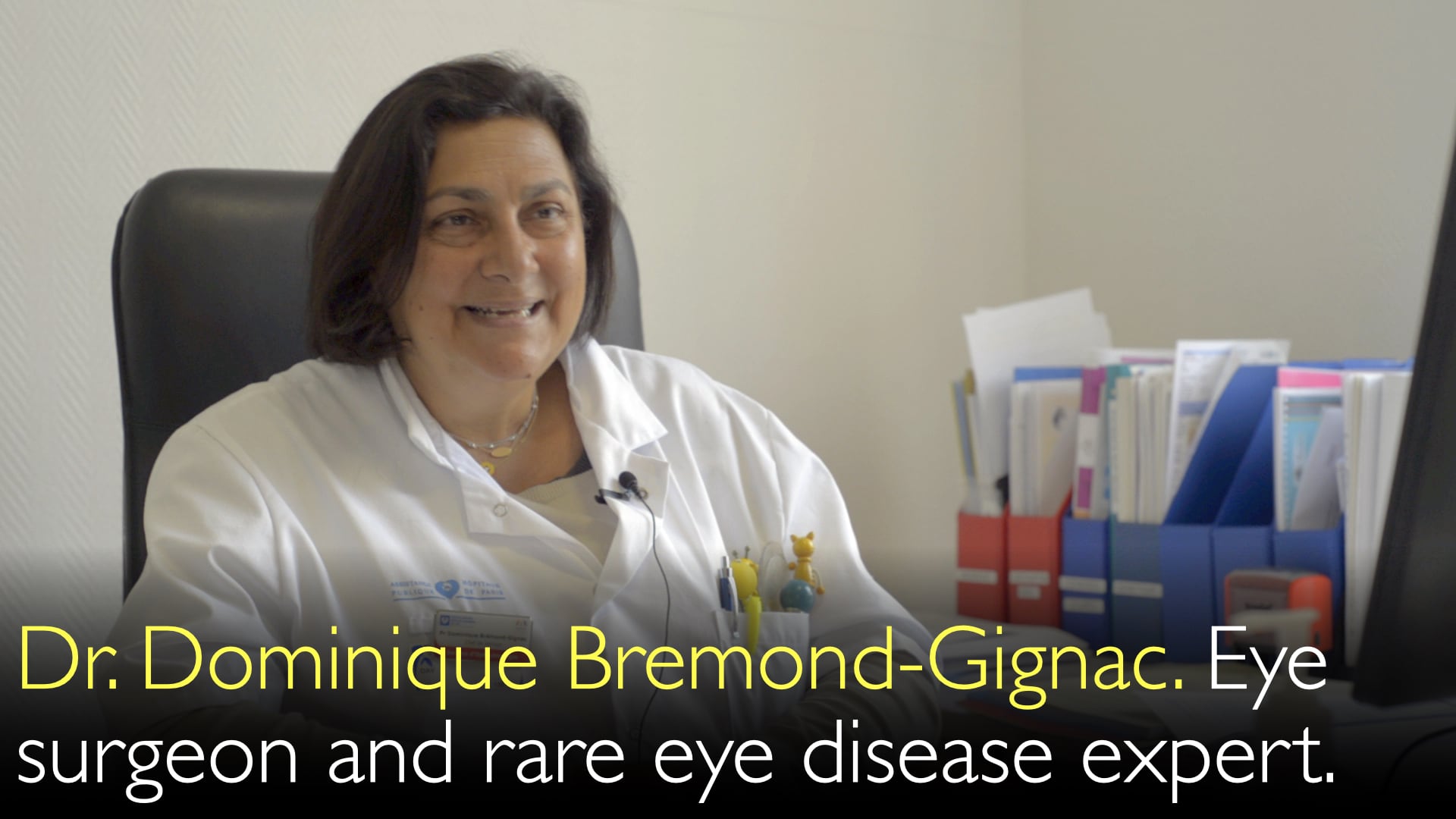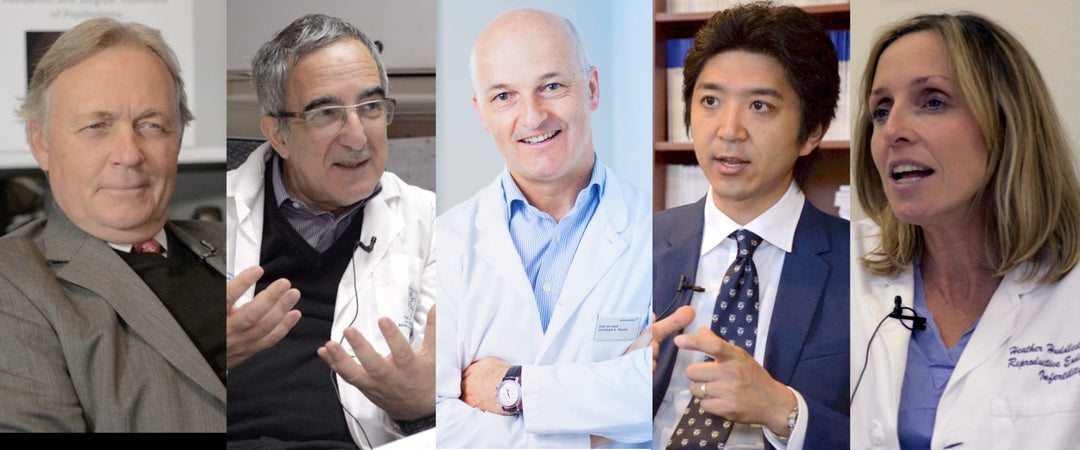Leading expert in pediatric ophthalmology, Dr. Dominique Bremond-Gignac, MD, explains how low-dose atropine eye drops are a primary treatment to slow myopia progression in children. She details the criteria for starting atropine therapy, including rapid myopia growth and a strong family history of high myopia, and clarifies that the very low concentrations used, such as 0.01% and 0.05%, typically do not affect accommodation, allowing for flexible morning or evening dosing. Dr. Bremond-Gignac also discusses the mechanism of action and compares atropine's efficacy to other myopia control strategies like orthokeratology contact lenses.
Myopia Control in Children: Using Low-Dose Atropine to Slow Nearsightedness Progression
Jump To Section
- When to Start Atropine Treatment for Childhood Myopia
- Atropine Dosing Schedule: Morning or Evening Use
- Low-Dose Atropine Concentrations and Side Effects
- Combining Atropine with Eyeglasses and Other Therapies
- How Atropine Works to Slow Myopia Progression
- Orthokeratology Contact Lenses for Myopia Control
- Why Atropine is the Most Effective Myopia Treatment
- Full Transcript
When to Start Atropine Treatment for Childhood Myopia
Deciding when to initiate atropine treatment for a child's myopia depends on several key clinical factors. According to Dr. Dominique Bremond-Gignac, MD, a strong family history of high myopia is a major indicator to begin therapy early, as it signifies a genetically high risk for severe nearsightedness. The most critical factor, however, is the rate of progression. Dr. Dominique Bremond-Gignac, MD, states that if a child's myopia is "rapidly growing," atropine therapy can be started "very early," even shortly after the condition is first recognized.
Atropine Dosing Schedule: Morning or Evening Use
A common concern for parents is how atropine drops will affect their child's vision and daily life. Dr. Dominique Bremond-Gignac, MD, clarifies that the extremely low concentrations used for myopia control mean the dosing schedule is flexible. She explains that because there is often "no impact on the accommodation," the drops can be administered in the morning. However, if a child does experience some blurry vision, Dr. Bremond-Gignac advises using the atropine "in the evening, because it's better" to minimize any potential daytime visual side effects.
Low-Dose Atropine Concentrations and Side Effects
The atropine formulations for myopia control are vastly different from standard preparations. Dr. Dominique Bremond-Gignac, MD, highlights that while standard atropine drops are 1% or 0.3%, the concentrations for slowing myopia progression are a much weaker 0.01% and 0.05%. This "very low dose" is the primary reason it typically has no significant effect on the eye's ability to focus. This safety profile makes it a practical long-term treatment option for children, as discussed by Dr. Anton Titov, MD, during the interview.
Combining Atropine with Eyeglasses and Other Therapies
Atropine treatment is not mutually exclusive with other vision correction methods. Dr. Dominique Bremond-Gignac, MD, emphasizes that therapy is "tailored for the child or the parents." A common approach is to "begin with eyeglasses, and after that, add atropine" to address the underlying progression of the condition. This combination strategy allows ophthalmologists to simultaneously correct a child's current vision and actively slow the worsening of their myopia.
How Atropine Works to Slow Myopia Progression
The mechanism by which low-dose atropine slows myopia progression is an area of active research. Dr. Dominique Bremond-Gignac, MD, explains that atropine is "supposed to act on the muscarinic receptors and inhibit them." She describes two potential mechanisms. The primary action is believed to be fighting the "defocus on the middle periphery of the retina," a signal that tells the eye to grow longer. By interrupting this signal, atropine helps stabilize the eye's axial length. Dr. Bremond-Gignac candidly admits, "I think we do not know everything about that," highlighting the ongoing scientific inquiry into its exact function.
Orthokeratology Contact Lenses for Myopia Control
During the conversation with Dr. Anton Titov, MD, orthokeratology was discussed as an alternative myopia control strategy. Dr. Bremond-Gignac clarifies that "orthokeratology is not a new system," but rather a well-known method involving specially designed rigid contact lenses worn overnight to reshape the cornea. She notes that brands like Menicon Ortho-k lenses are effective but are often more suitable for "older children" who can tolerate them, as younger children may find it "very difficult to wear this semi-rigid contact lens during the night." A significant challenge, as Dr. Bremond-Gignac points out, is the lack of large clinical trials to firmly establish its efficacy due to the difficulty in conducting such studies.
Why Atropine is the Most Effective Myopia Treatment
When comparing the available options for controlling childhood myopia, Dr. Dominique Bremond-Gignac, MD, provides a clear conclusion. Despite the promise of innovative systems like orthokeratology, she states that "atropine is probably the most efficient system to slow myopia progression." This endorsement is based on its proven efficacy, ease of use, and well-understood safety profile at low doses. This is a crucial development for a condition that Dr. Anton Titov, MD, notes affects a "very large percentage of young children," amounting to millions globally.
Full Transcript
Dr. Anton Titov, MD: Atropine for their myopia. How bad should myopia be before atropine is started? Can atropine be started when myopia has just been first recognized? What are the criteria for initiating the atropine treatment for myopia? Because there is a lot of different opinions on atropine, especially about using atropine in children.
The second part of the question is this. Is atropine for myopia used only during the night? So that because it affects their accommodation. How is atropine being used in ophthalmology to prevent and treat myopia?
Dr. Dominique Bremond-Gignac, MD: Well, it was the age of the child with myopia. It also depends on the history of myopia in the family. Because when you have a family with high myopia in the parents, you know that the child has a high risk of having the same severe myopia. So in these cases, you can just begin to use the atropine treatment very early.
For the atropine treatment, it could be in the morning rather than in the evening because it doesn't have a real effect on the accommodation. Because it's a very low dose of atropine. Standard atropine drops are usually 1% or atropine is 0.3%. And in this case, for nearsightedness treatment, atropine is 0.01% and 0.05%. So it's very low. And usually, there is no impact on the accommodation.
If there is an impact on the accommodation, we use atropine in the evening, because it's better. And we can also combine atropine and some eyeglasses. For instance, we can just begin with eyeglasses, and after that, add atropine. So it is tailored for the child or the parents.
I cannot say exactly when to begin the atropine treatment. But for sure, if there is a new evolution of myopia, if nearsightedness is rapidly growing, we can start therapy with atropine very early.
Dr. Anton Titov, MD: What would be the mechanism of action of atropine at such very low concentrations?
Dr. Dominique Bremond-Gignac, MD: That's a very interesting question because I think we do not know everything about that. Atropine is supposed to act on the muscarinic receptors and inhibit them. So there are two mechanisms of action of atropine to slow down myopia progression.
Its first action is to fight the defocus on the middle periphery of the retina. There is the signal there that says, "okay, just grow the eye." So that's the defocus system on the glasses and the contact lenses with the defocus system. Or it can be reshaping the cornea with orthokeratology. Or it can be activated with myopia or with atropine on muscarinic receptors. But I'm not sure we know everything about atropine.
Dr. Anton Titov, MD: Well, this is very interesting. And you also mentioned that there are some corrective contact lenses that reshape the cornea in a child with developing myopia. How does that work? Is that something recent? What is the name of the particular technology? Because that's something new, I have not heard about it before.
Dr. Dominique Bremond-Gignac, MD: So the orthokeratology is not a new system. It's been a very well-known system for quite a long time. But I think orthokeratology is interesting for older children. Because in younger children, it's very difficult to make them wear this semi-rigid contact lens during the night.
Of course, orthokeratology is very interesting for older children who go to sports activities. Menicon Ortho-k orthokeratology lenses are doing very nice shaping of the cornea. But there are also all the other laboratories that can do orthokeratology lenses. Because orthokeratology is not a new system, it works.
But the problem of orthokeratology is that it's difficult to make a clinical study. So there are no reference clinical trial studies with large numbers of patients because it's quite difficult to do them. That's why orthokeratology was used a long time ago. But it's not very easy to demonstrate exactly the action of orthokeratology lenses.
Also, it is because when you act on the shape of the cornea, you don't get exactly the actual lens in the shape of the eye. Because you just go and flatten the cornea. And so, this is very difficult also to understand the process of myopia correction.
So that's a very interesting system of myopia therapy. But I would say that I will go to new innovating systems first, or atropine therapy. Atropine is probably the most efficient system to slow myopia progression.
Dr. Anton Titov, MD: While this is very interesting - addressing myopia with the new technologies, obviously but also with some pharmacological means. Hopefully, it will lead to a decrease in myopia, especially in younger children. 20% is a very large percentage of young children, you know, millions of children around the world.
Dr. Dominique Bremond-Gignac, MD: Exactly!








